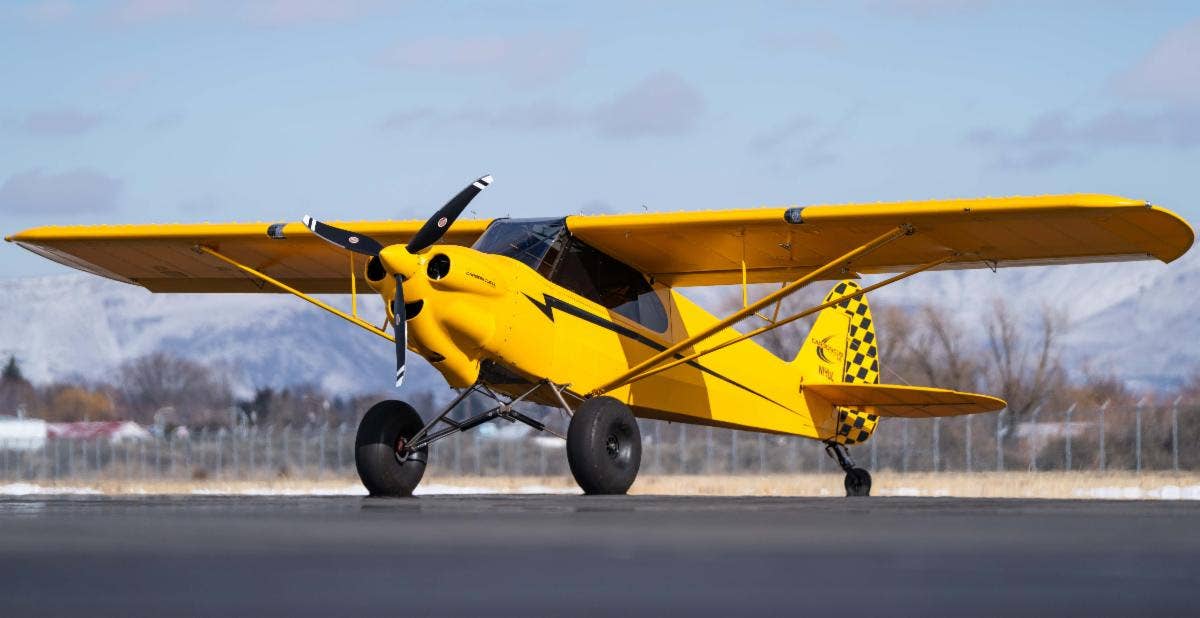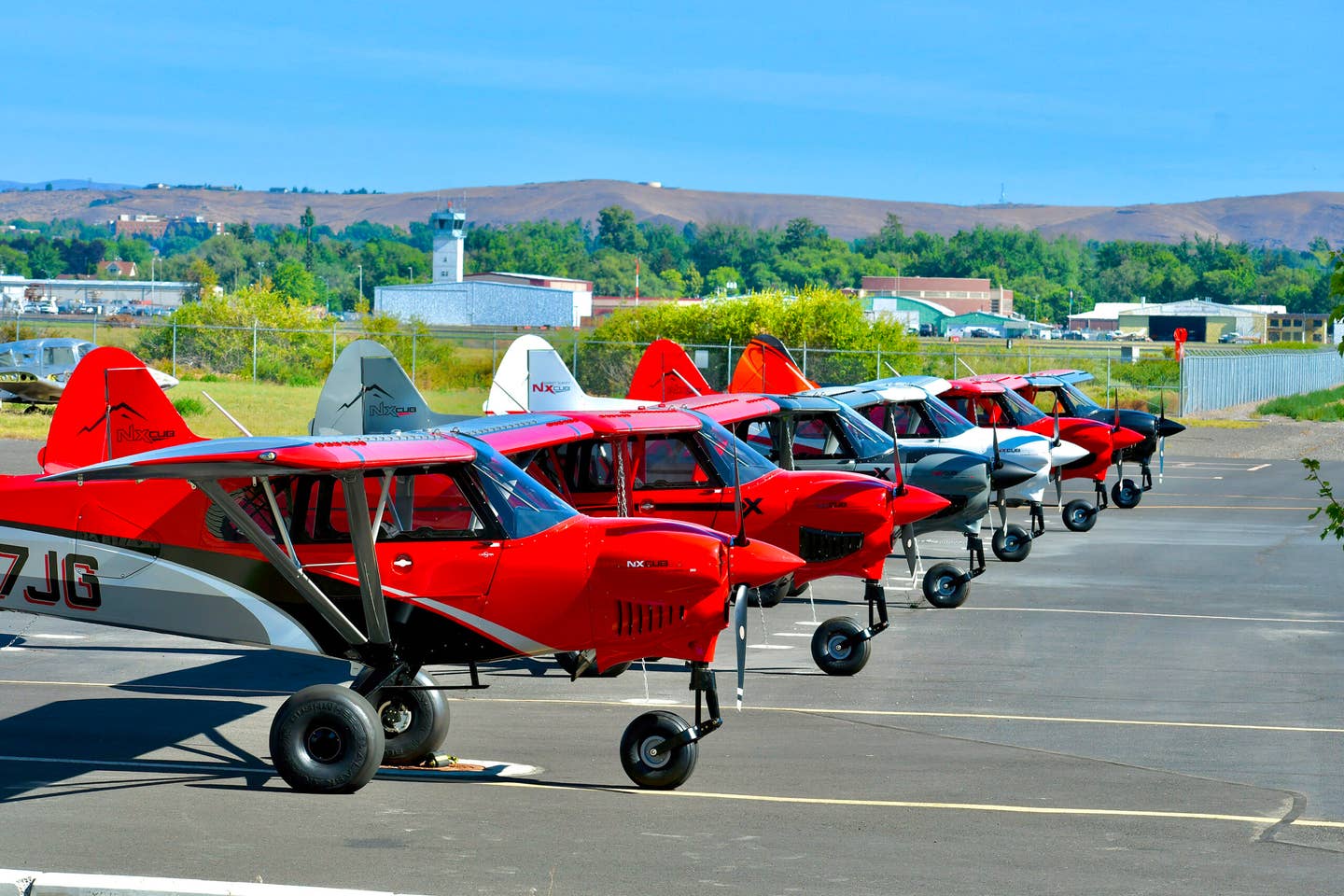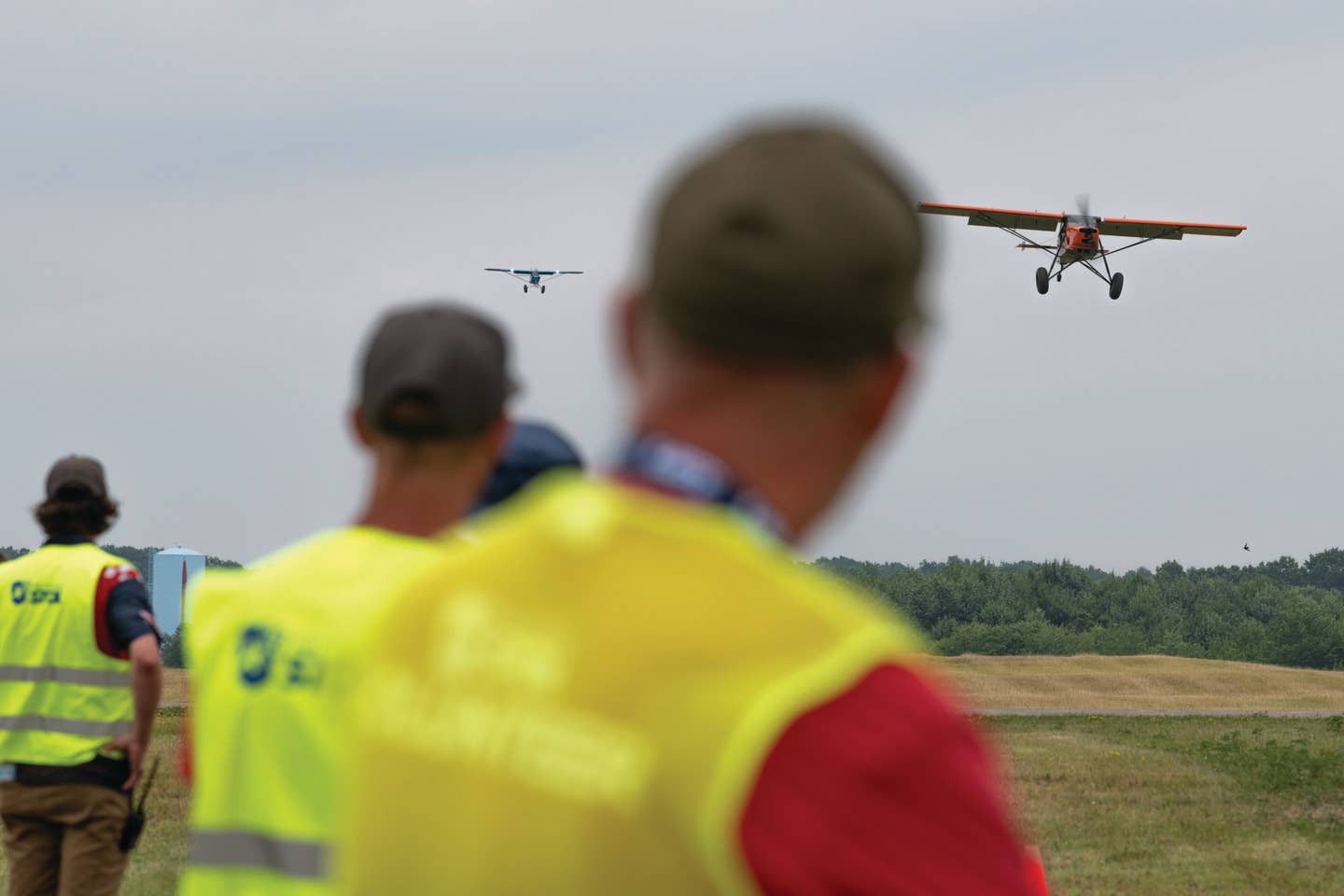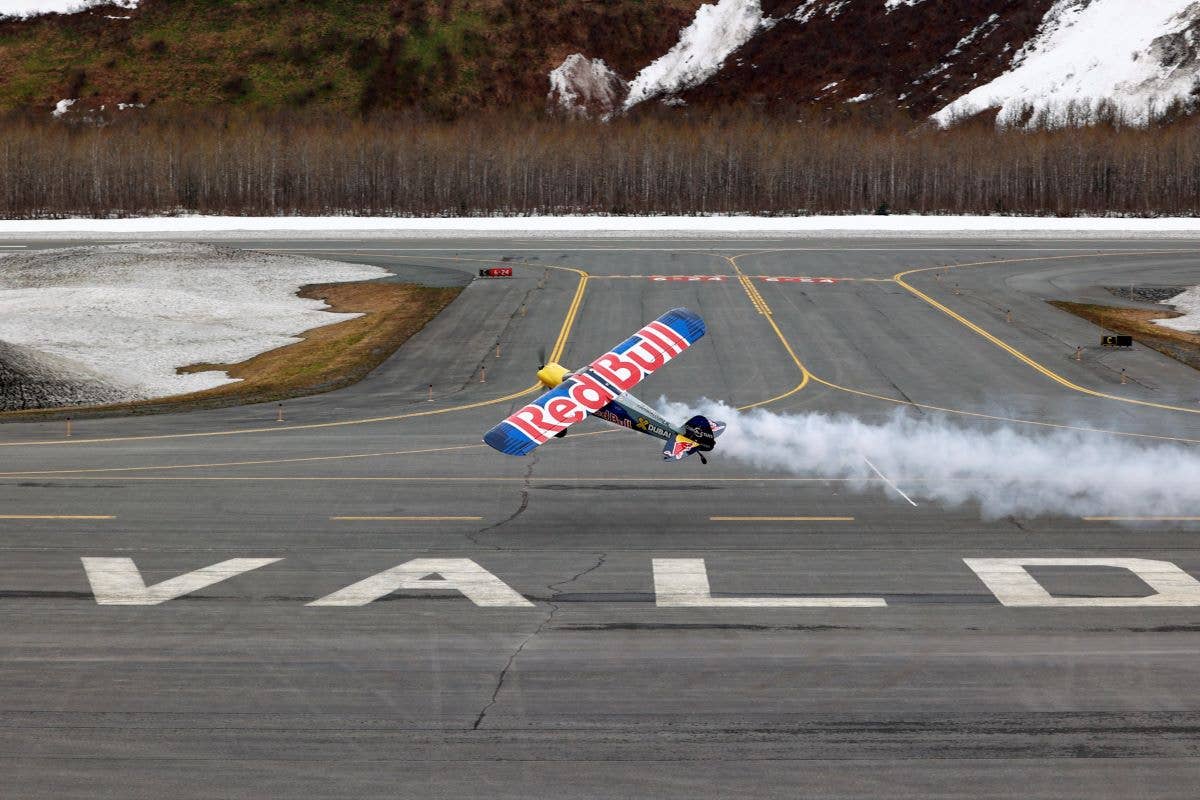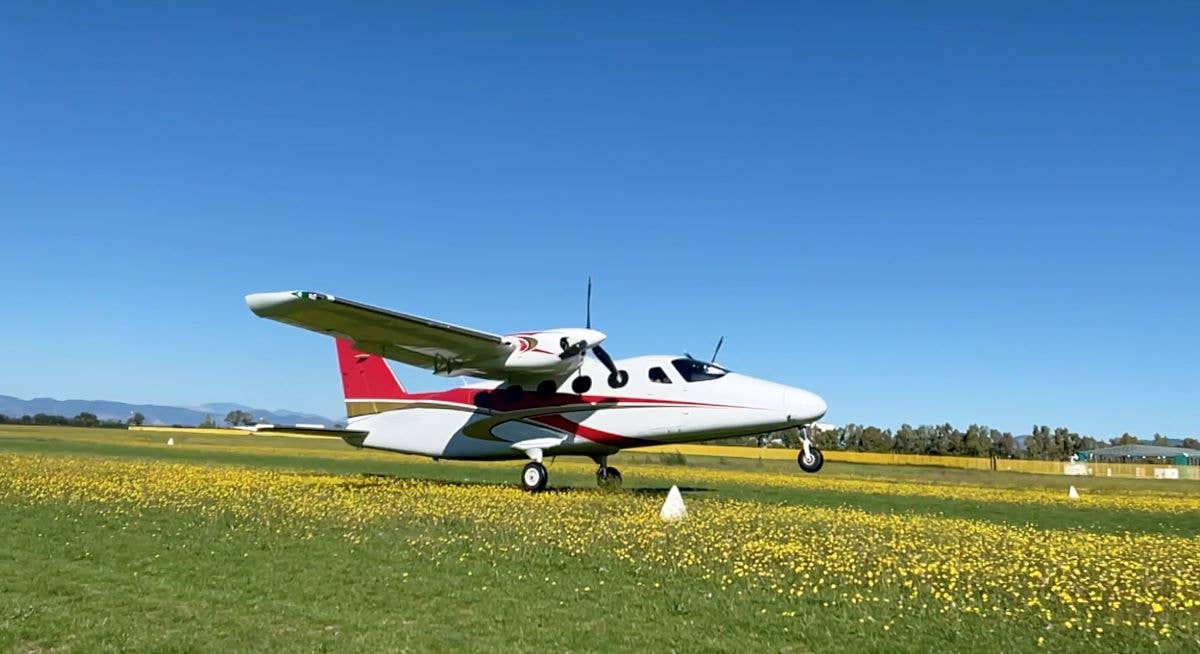The Pilots of STOL Drag
Not your average fat-tire cowboy or cowgirl, the pilots of STOL Drag are in it to win it.
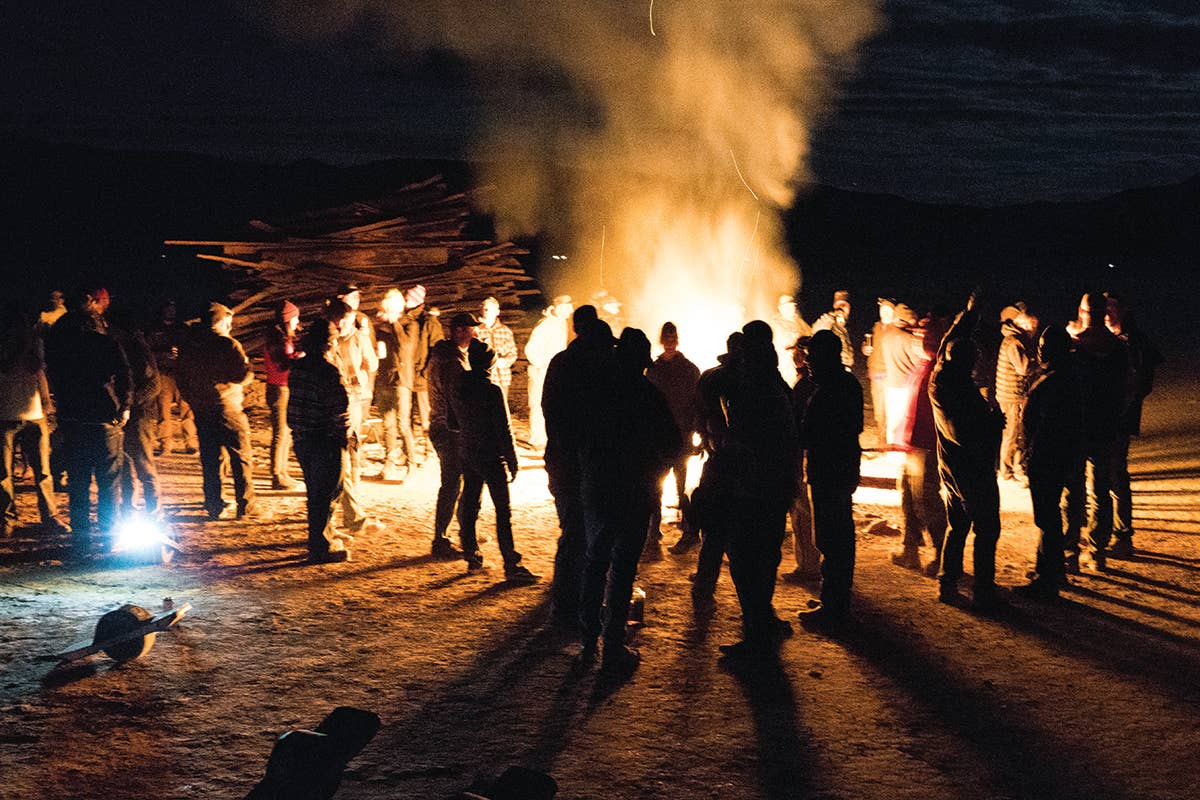
[Photo: Leonardo Correa Luna]
There is no wind at the Dead Cow lakebed northwest of Reno, Nevada. Yet the sand-colored dust swirls above the ground, obscuring two small airplanes, running side-by-side, spinning around nose to tail. The engines rev up and the pilots push them to the max before pulling the power to idle around halfway down the course.
In a cartoonlike drag race, the pilots pull their airplanes into a slip to slow down quickly, land beyond the line from which they had started—2,000 feet from the turn-around line—and hit the brakes to come to a complete stop. This is the World Championship Short Takeoff and Landing (STOL) Drag competition at the High Sierra Fly-In (HSF). Like cowboys racing their horses around barrels, the pilots push their airplanes through the course, intent on getting to the finish line and stopping their aircraft before their opponents can.
The grinning faces and twinkles in the eyes of the pilots who race are indicative of the level of fun this competition provides. But this is not an exclusive club. While some skills are required, you don’t have to be a seasoned Valdez, Alaska, STOL competitor or own a bushplane to participate. As you’ll see from these pilot profiles, STOL Drag is open to those with a passion for maximizing their skills and fun with their airplanes.
Aaron Greear
Second Place, Bronze Class
The ink is barely dry on the pilot certificate belonging to Aaron Greear, who started flying in December 2020. The mechanical engineer knocked out his private pilot training in just a few weeks. He was inspired by videos of Trent Palmer and the Patey brothers (Mike and Mark) and planned to buy a Kitfox or a Cub for STOL. But his friends convinced him to build time in a Cessna 182, and he bought a 1959 Skylane right after completing his private pilot certificate in January 2021. The following month, Greear was ready to participate in his first conventional STOL event.
Greear planned his first STOL Drag event to be the 2021 MayDay STOL in Wayne, Nebraska. But he didn't have the required 250 hours of pilot-in-command time and wasn't able to compete. By the time HSF came around, Greear had accumulated 250.1 hours of PIC. He qualified in the bronze class and crushed his way through the elimination rounds. In the final round he met Jon Hakala, flying a Zenith CH 701. It was a tight race, but he disqualified and Hakala took home the trophy. Greear plans to continue to compete in STOL Drag—and to build a souped-up experimental airplane.
Austin Clemens
First Place, Silver Class
As the youngest STOL Drag pilot at HSF, Austin Clemens grew up at one of the coolest airports in the country—Lloyd Stearman Field (1K1) in Benton, Kansas—owned and operated by his parents, Julie and Dwayne, both exceptional pilots in their own right.
As soon as Clemens could reach the rudder pedals of an airplane—with blocks, mind you—he started flying the family’s Piper Cub around the age of 10. In fact, he would get up early and fly the Cub before school.
Clemens got his private certificate on his 17th birthday, in March 2020. His proven pilot skills earned him the blessing to fly the family’s Stearman, and he would spend long days during his first official year as a pilot taking people for rides in the open cockpit biplane. Clemens now holds single-engine and multiengine commercial certificates, with an instrument rating for each.
His enthusiasm and skills led him to start flying in STOL Drag competitions. The Husky he flies has a standard Lycoming O-360 engine with 180 hp, but it has a two-blade MT propeller that can be put in reverse, allowing him to land and stop in about 120 feet. Competitors say it's his secret, but there's more to him.
Cathy Page
Fifth Place, Bronze Class
The STOL competitions might at first appear to be an all-boys club. But, two out of the 30-plus contestants in the 2021 HSF STOL Drag contest were women. One was Cathy Page, who flew a Piper Clipper in the bronze class.
Page started flying in 1987. Her goal then was to spend more time with her dad. But Page—a pipefitter at the time—fell in love with the sport and bought a Cessna 170. A few years later, she decided to go all in: She sold her airplane and used her savings to help her survive the first few years of her new pilot career. Today, she’s an Airbus captain for Spirit Airlines. Page lives in Tucson, Arizona, but commutes to her airline’s base in Las Vegas, Nevada, flying her Van’s Aircraft RV-6, which she also uses for formation flying.
When Page first visited HSF around 2015, she didn’t plan to compete—but it didn’t take a lot of convincing for the former motorcycle- and ski-racer to give it a shot. She has returned every year since. Page is upping the game in 2022, dropping the Clipper for a Carbon Cub, and she plans on flying several STOL Drag and traditional STOL competitions.
Toby Ashley
First Place, Gold Class
A competitor to the core, Toby Ashley topped the podium in the gold class at the 2021 STOL Drag World Championships. Ashley’s success in STOL Drag stems from decades of motorsports racing. He started racing snowmobiles at age 5 and went on to dirt bikes at 10. His competitive spirit led him to state, regional, and national championships.
Ashley started flying in the mid-1990s. He quickly earned his pilot credentials, and from his home in Boise, Idaho, the backcountry beckoned. His passion for backcountry flying led him to build one of the best airplanes for the mission, a CubCrafters Carbon Cub, which he built with three friends in just 81 days in 2016. He brought the airplane to Valdez, Alaska, in 2017, where he came in second in the STOL competition and first in Flour Bombing.
Since then, Ashley has become nearly unbeatable in STOL. He won the National Championship STOL Drag at the STIHL National Championship Air Races at Reno-Stead Airport, and the World Championship STOL Drag at HSF in both 2019 and 2021.
Ashley’s Carbon Cub EX, named Sarge, is highly modified and optimized for STOL Drag. The airplane was stripped down to about 800 pounds and its 180 hp engine was replaced with a supercharged nitrous-boosted 400 hp engine [see Part Three: Mods].
Steve Henry
Second Place, Gold Class
You haven’t seen true competition until you’ve seen Toby Ashley and Steve Henry flying around the STOL
Drag course. For the past few events, the two have been neck and neck with only fractions of a second setting them apart in each heat in the top class, the gold.
Henry started flying in 2003 and built his first airplane—a Just Aircraft Highlander—in 2004. He became known for his extraordinary videos, taking off without power by rolling off steep mountain ridges and
soaring to dirt strips in narrow canyons.
The Highlander that Henry races is named Yee Haw 6, and it is a STOL-Drag beast. The taildragger weighs
in at right around 800 pounds and is powered by a 300-hp Edge Performance EPeX Yamaha engine. He
also modified his airplane with drag inducers that provide extra drag during a slip, but not in straight flight.
Henry has either won or placed in the top three in a long list of STOL and STOL Drag races. He won the World Championship STOL Drag at HSF in 2016. In the final gold races in 2021, Henry beat Ashley in the first heat. But Ashley inched ahead in the subsequent two heats, giving him the trophy in the end.
There is no doubt that Ashley and Henry are spending the winter months brainstorming mods that might ensure a win in 2022. The year is sure to feature another set of nail-biters during each race in which they compete.
This article originally appeared in the Q1 2022 edition of FLYING.

Sign-up for newsletters & special offers!
Get the latest FLYING stories & special offers delivered directly to your inbox

